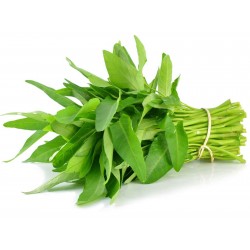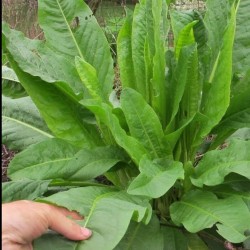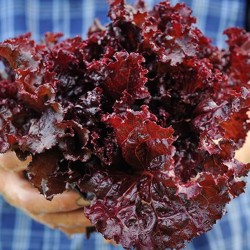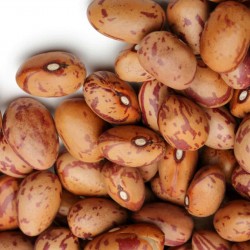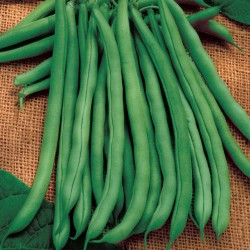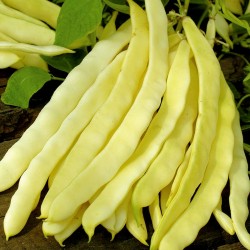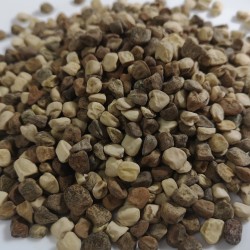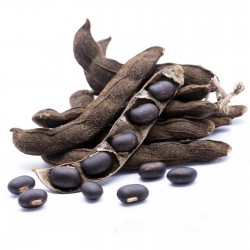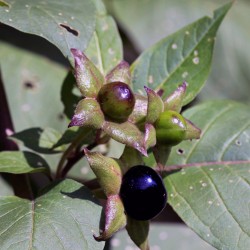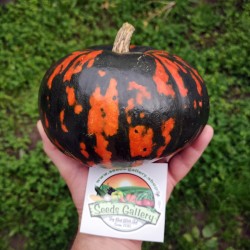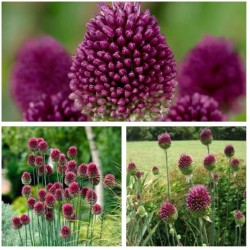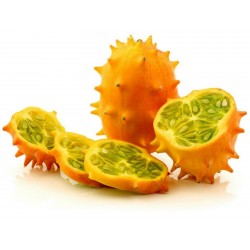Seeds Gallery Com,
5/
5
<h2 class=""><strong>Velvet Bean Seeds (Mucuna pruriens)</strong></h2>
<h2><span style="color: #ff0000;"><strong>Price for Package of 5 seeds.</strong></span></h2>
<p><i><b>We have in offer Mucuna pruriens with white and black seeds. Choose under the color option seeds color.</b></i></p>
<p><i><b>Mucuna pruriens</b></i><span> is a tropical </span>legume<span> native to Africa and tropical Asia and widely naturalized and cultivated.</span><sup id="cite_ref-GRIN_2-0" class="reference"></sup><span> Its English </span>common names<span> include </span><b>monkey tamarind</b><span>, </span><b>velvet bean</b><span>, </span><b>Bengal velvet bean</b><span>, </span><b>Florida velvet bean</b><span>, </span><b>Mauritius velvet bean</b><span>, </span><b>Yokohama velvet bean</b><span>, </span><b>cowage</b><span>, </span><b>cowitch</b><span>, </span><b>lacuna bean</b><span>, and </span><b>Lyon bean</b><span>.</span><sup id="cite_ref-GRIN_2-1" class="reference">[2]</sup><span> The plant is notorious for the extreme itchiness it produces on contact,</span><sup id="cite_ref-ReferenceA_3-0" class="reference"></sup><span> particularly with the young foliage and the seed pods. It has agricultural and horticultural value and is used in </span>herbalism<span>.</span></p>
<p>The plant is an annual climbing shrub with long vines that can reach over 15 metres (50 ft) in length. When the plant is young, it is almost completely covered with fuzzy hairs, but when older, it is almost completely free of hairs. The leaves are tripinnate, ovate, reverse ovate,<span> </span>rhombus-shaped or widely ovate. The sides of the leaves are often heavily grooved and the tips are pointy. In young<span> </span><i>M. pruriens</i><span> </span>plants, both sides of the leaves have hairs. The stems of the leaflets are two to three millimeters long (approximately one tenth of an inch). Additional adjacent leaves are present and are about 5 millimetres (0.2 in) long.</p>
<p>The flower heads take the form of axially arrayed<span> </span>panicles. They are 15–32 centimetres (6–13 in) long and have two or three, or many flowers. The accompanying leaves are about 12.5 millimetres (0.5 in) long, the flower stand axes are from 2.5–5 millimetres (0.1–0.2 in). The bell is 7.5–9 millimetres (0.3–0.4 in) long and silky. The<span> </span>sepals<span> </span>are longer or of the same length as the shuttles. The crown is purplish or white. The flag is 1.5 millimetres (0.06 in) long. The wings are 2.5–3.8 centimetres (1.0–1.5 in) long.</p>
<p>In the fruit-ripening stage, a 4–13 centimetres (2–5 in) long, 1–2 centimetres (0.4–0.8 in) wide, unwinged, leguminous fruit develops. There is a ridge along the length of the fruit. The husk is very hairy and carries up to seven seeds. The seeds are flattened uniform ellipsoids, 1–1.9 centimetres (0.4–0.7 in) long, .8–1.3 centimetres (0.3–0.5 in) wide and 4–6.5 centimetres (2–3 in) thick. The<span> </span><i>hilum</i>, the base of the<span> </span><i>funiculus</i><span> </span>(connection between placenta and plant seeds) is a surrounded by a significant<span> </span><i>arillus</i><span> </span>(fleshy seed shell).</p>
<p><i>M.pruriens</i><span> </span>bears white, lavender, or purple<span> </span>flowers. Its seed pods are about 10 cm (4 inches) long<sup id="cite_ref-Rätsch_4-0" class="reference">[4]</sup><span> </span>and are covered in loose, orange hairs that cause a severe itch if they come in contact with skin. The itch is caused by a protein known as<span> </span>mucunain.<sup id="cite_ref-Reddy_5-0" class="reference">[5]</sup><span> </span>The seeds are shiny black or brown<span> </span>drift seeds.</p>
<p>The dry weight of the seeds is 55–85 grams (2–3 oz)/100 seeds.</p>
<h2><span class="mw-headline" id="Uses">Uses</span></h2>
<p>In many parts of the world,<span> </span><i>Mucuna pruriens</i><span> </span>is used as an important<span> </span>forage,<span> </span>fallow<span> </span>and<span> </span>green manure<span> </span>crop.<span> </span>Since the plant is a<span> </span>legume, it<span> </span>fixes nitrogen<span> </span>and fertilizes soil. In<span> </span>Indonesia, particularly<span> </span>Java, the beans are eaten and widely known as 'Benguk'. The beans can also be fermented to form a food similar to<span> </span>tempe<span> </span>and known as<span> </span>Benguk tempe<span> </span>or 'tempe Benguk'.</p>
<p><i>M. pruriens</i><span> </span>is a widespread fodder plant in the tropics. To that end, the whole plant is fed to animals as<span> </span>silage, dried hay or dried seeds.<span> </span><i>M. pruriens</i><span> </span>silage contains 11-23% crude protein, 35-40% crude fiber, and the dried beans 20-35% crude protein. It also has use in the countries of<span> </span>Benin<span> </span>and<span> </span>Vietnam<span> </span>as a biological control for problematic<span> </span><i>Imperata cylindrica</i><span> </span>grass.<sup id="cite_ref-tropical_7-1" class="reference">[7]</sup><span> </span><i>M. pruriens</i><span> </span>is said to not be invasive outside its cultivated area.<sup id="cite_ref-tropical_7-2" class="reference">[7]</sup><span> </span>However, the plant is invasive within conservation areas of South Florida, where it frequently invades disturbed land and<span> </span>rockland hammock<span> </span>edge habitats. Cooked fresh shoots or beans can also be eaten. The plant contains relatively high (3–7% dry weight) levels of<span> </span>L-DOPA; some people are sensitive to L-DOPA and may experience nausea, vomiting, cramping, arrhythmias, and hypotension. Up to 88% of the L-DOPA can be extracted from<span> </span><i>M. pruriens</i><span> </span>by boiling and soaking for approximately 48 hours. The efficiency of the process can be slightly improved by using approximately 0.25-0.50% sodium bicarbonate.<sup id="cite_ref-8" class="reference">[8]</sup></p>
<h3><span class="mw-headline" id="Traditional_medicine">Traditional medicine</span></h3>
<p>The seeds of<span> </span><i>Mucuna pruriens</i><span> </span>have been used for treating many dysfunctions in Tibb-e-Unani (Unani Medicine).<sup id="cite_ref-Amin_9-0" class="reference">[9]</sup><span> </span>It is also used in<span> </span>Ayurvedic medicine.</p>
<p>The plant and its extracts have been long used in tribal communities as a toxin antagonist for various snakebites. It has been studied for its effects against bites by<span> </span><i>Naja</i><span> </span>spp. (cobra),<sup id="cite_ref-10" class="reference">[10]</sup><span> </span><i>Echis</i><span> </span>(Saw scaled viper),<sup id="cite_ref-11" class="reference">[11]</sup><span> </span><i>Calloselasma</i><span> </span>(Malayan Pit viper) and<span> </span><i>Bangarus</i><span> </span>(Krait).<sup class="noprint Inline-Template Template-Fact">[<i><span title="This claim needs references to reliable sources. (November 2019)">citation needed</span></i>]</sup></p>
<p>It has long been used in traditional<span> </span>Ayurvedic<span> </span>Indian medicine in an attempt to treat diseases including<span> </span>Parkinson's disease.<sup id="cite_ref-DoubleBlind_12-0" class="reference">[12]</sup><span> </span>It has been investigated in low income regions of the world as an alternative treatment for Parkinson's disease due to its high content of<span> </span>L-dopa.<sup id="cite_ref-13" class="reference">[13]</sup><span> </span>Mucuna prurien seeds have been recognized for their ability to significantly alleviate neurotoxocity induced by Parkinson's disease.<sup id="cite_ref-14" class="reference">[14]</sup></p>
<p>Dried leaves of<span> </span><i>M. pruriens</i><span> </span>are sometimes smoked.<sup id="cite_ref-Rätsch_4-1" class="reference">[4]</sup></p>
<h2><span class="mw-headline" id="Itch-inducing_properties">Itch-inducing properties</span></h2>
<p>The hairs lining the seed pods contain<span> </span>serotonin<span> </span>and the protein<span> </span>mucunain<span> </span>which cause severe<span> </span>itching<span> </span>when the pods are touched.<sup id="cite_ref-ReferenceA_3-1" class="reference"></sup><sup id="cite_ref-toxicology_15-0" class="reference"></sup><sup id="cite_ref-16" class="reference"></sup><span> </span>The calyx below the flowers is also a source of itchy spicules and the stinging hairs on the outside of the seed pods are used in some brands of<span> </span>itching powder.<sup id="cite_ref-ReferenceA_3-2" class="reference">[3]</sup><sup id="cite_ref-joglekar_17-0" class="reference">[17]</sup><span> </span>Scratching the exposed area can spread the itching to other areas touched. Once this happens, the subject tends to scratch vigorously and uncontrollably and for this reason the local populace in northern Mozambique refer to the beans as "mad beans" (<i>feijões malucos</i>). The seed pods are known as "Devil Beans" in Nigeria.<sup id="cite_ref-18" class="reference"></sup></p>
<h2><span class="mw-headline" id="Pharmacology">Pharmacology</span></h2>
<p>The seeds of the plant contain about 3.1–6.1%<span> </span>L-DOPA,<sup id="cite_ref-toxicology_15-1" class="reference"></sup><span> </span>with trace amounts of<span> </span>serotonin,<span> </span>nicotine, and<span> </span>bufotenine.<sup id="cite_ref-19" class="reference"></sup><span> </span>One study using 36 samples of seeds found no<span> </span>tryptamines<span> </span>present.<sup id="cite_ref-20" class="reference">[20]</sup><span> </span><i>M. pruriens</i><span> </span>var.<span> </span><i>pruriens</i><span> </span>has the highest content of L-dopa. An average of 52.11% degradation of L-dopa into damaging<span> </span>quinones<span> </span>and reactive oxygen species was found in seeds of<span> </span><i>M. pruriens</i><span> </span>varieties.</p>
<script src="//cdn.public.n1ed.com/G3OMDFLT/widgets.js"></script>
VE 178 B (5 S)
